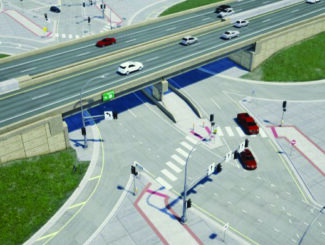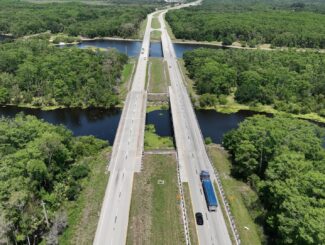By Jake Newhall, Project Manager and Ray Theiler, Project Engineer, WSB
Extreme rainfall events are seemingly occurring more frequently than in the past. The frequency at which Americans are experiencing severe weather events due to climate change means building resiliency into infrastructure is more critical than ever. The influx of funding made available from the $1.2 trillion infrastructure package is giving many communities unprecedented opportunities to make significant infrastructure improvements, and it’s important for community leaders to explore how resiliency in planning and building can bring both short and long-term benefits.
One solution to build resiliency in planning is through green infrastructure, which helps absorb water and emulate natural water cycles. Green infrastructure can significantly reduce environmental impacts and pollution and can also be far more resilient and economical for communities.
Exploring Green Infrastructure & Solutions to Improve Resiliency
As communities explore resiliency and green infrastructure, they must first consider their specific needs and impacts. From there, they can determine projects that most greatly benefit from investment in green infrastructure. Resiliency comes in many forms and can be built into a wide variety of community projects.
Is your community prone to flooding? Stormwater-related infrastructure including stormwater re-use for irrigation, allowing park space to flood during large events, incorporating overland overflows into drainage systems, tree planting to improve canopy, and slope stabilization can all be environmentally friendly and help reduce impacts from extreme weather events. Does your area often face drought or water shortage? Reuse of stormwater for irrigation also reduces the burden on potable water and depleted aquifers. There are also private entities and smaller public projects that can build in conservation practices to reduce impact like rooftop gardens or native landscaping. Aging service lines can be replaced to improve resiliency and drinking water quality.
Transit and roadway improvement can also include green infrastructure that strengthens resiliency and reduces environmental impact. Some alternatives include tree trenches, native plantings, vegetated depressed medians, incorporating linear best management practices, and evaluating retrofits to the existing storm sewer system as part of transportation infrastructure planning will improve sustainability.
Think Ahead & Think Big Picture
With the influx of additional federal dollars available for infrastructure projects, communities must think ahead and think big. Whether it’s getting on the project priority list, putting forward a feasibility plan, or including green infrastructure early in a transportation project planning process, thorough, thoughtful preparation is key and can help ensure your project secures funding.
It’s also vital for communities to go back and look at projects that may have been previously out of budget or may have not quite made the cut due to other projects competing for limited grant dollars. The federal infrastructure law provides another meaningful opportunity to secure funding for projects that may have previously been out of reach.
Plus, if a community plans a project with big picture thinking – like a transit project that includes all the green infrastructure planning up front, for example – it can improve the odds of scoring higher in the grant application process, as well as provide long-term social benefits and economic savings. It’s often easier to build all at once, rather than do piecemeal fixes later.
How WSB Can Help
If your community is exploring how it can tap into opportunities to improve infrastructure resiliency and invest in green infrastructure, WSB can help.
Our firm can inventory lead water service lines with our GIS services. Our team can help review capital projects, risk areas, or identify how to score higher on project grant applications and better utilize funding. We design, plan, and build green infrastructure projects that help communities better manage and protect their water and other natural resources. WSB can also help communities navigate the project priority list and intended use plan process.
Every project is different, and every community is different. But as we face a changing climate and more severe weather events, green infrastructure and more resilient infrastructure is critical to communities, residents, and our environment.

Jake has more than 15 years of engineering experience designing and managing many types of water resources projects, including modeling, planning, design, maintenance programs, and construction. Jake has worked with various municipalities, counties and state agencies to solve challenging water quality and water quantity problems.
[email protected] | 763.231.4861

Ray is a Project Engineer specializing in project planning, feasibility studies, computer modeling, preliminary and final design, bidding, construction management, grant writing, wellhead protection planning, risk assessments, emergency response planning, community engagement, and state water permitting.
r[email protected] | 612.360.3163

